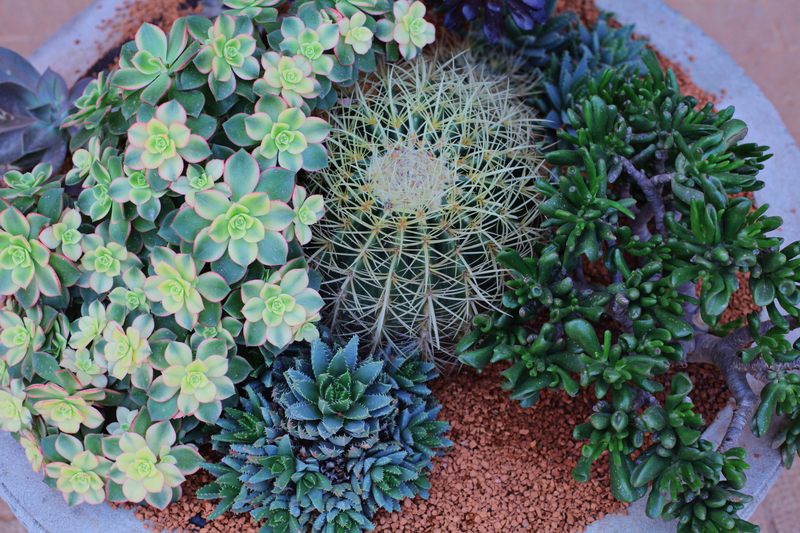Vertical Gardening for Urban Dwellers
Posted on 13/08/2025
Vertical Gardening for Urban Dwellers: The Ultimate Guide
In recent years, vertical gardening has emerged as an innovative solution for urban dwellers craving greenery amid concrete landscapes. For those living in apartments or homes with limited outdoor space, vertical gardening offers a compelling way to bring nature indoors or onto balconies, transforming bare walls into vibrant, lush gardens. Whether you're a seasoned plant lover or a newcomer to urban gardening, this in-depth guide will explore the advantages, methods, ideas, and practical advice for starting your own vertical garden in the city.

What is Vertical Gardening?
Vertical gardening is the art and science of growing plants upward rather than outward, utilizing vertical space on walls, fences, or structures. Unlike traditional gardens that rely on plot or ground space, vertical gardens are perfect for urban settings with limited square footage. This method of gardening includes everything from hanging planters and living green walls to stacked planters and trellised vegetable gardens.
The Benefits of Vertical Gardening for City Residents
1. Maximizing Space Efficiency
Urban vertical gardens enable city dwellers to grow a surprising variety of plants within a small footprint. By going vertical, you can transform balconies, patios, or even indoor walls into productive and beautiful green areas.
- Ideal for small apartments, condos, or homes with minimal outdoor space.
- Utilizes unused surfaces such as fences, windowsills, or kitchen walls.
2. Improving Air Quality
Having more plants indoors via vertical wall gardens can help filter pollutants and improve air quality. Many studies confirm that plants absorb carbon dioxide and release oxygen, making your living space healthier.
3. Enhancing Aesthetics
A well-designed urban vertical garden can act as a natural focal point, adding life and color to otherwise dull urban spaces. Vertical plant displays can express your style, from rustic charm with wooden palettes to modern vertical hydroponic systems.
4. Insulation and Energy Savings
Living green walls on the exteriors of buildings can provide extra insulation, potentially reducing heating and cooling costs. Plants act as a buffer, keeping interiors warmer in winter and cooler in summer.
5. Encouraging Homegrown Food in the City
With vertical gardens, growing herbs, vegetables, and fruits even in the tightest city spaces becomes possible. Imagine picking fresh basil or strawberries right from your balcony!
Types of Vertical Gardens for Urban Environments
1. Living Green Walls
Also known as plant walls or living walls, these stunning installations involve a panel system where plants grow vertically with the help of structured support and irrigation. Living green walls are made using soil, hydroponic, or sheet-based media and can be installed indoors or outdoors.
2. Vertical Planters and Pocket Systems
Modular planters, stacked pots, and pocket planters are excellent for renters and DIY enthusiasts. Fabric pockets or modular containers are attached directly to the wall, making installation easy and flexible.
- Ideal for herbs and small ornamentals
- Often used in kitchens or balconies
3. Trellises, Ladders, and Climbing Plant Supports
Support structures like trellises or ladders let climbing plants such as peas, cucumbers, or flowering vines grow upwards. This method is space-efficient and perfect for balconies or along railings.
4. Recycled and Upcycled Vertical Gardens
Eco-conscious urban dwellers can reuse old pallets, shoe organizers, or bottles to create quirky and functional vertical gardens. Upcycling not only helps the environment but also makes your urban garden uniquely personal.
5. Indoor Vertical Hydroponic Systems
Hydroponic technology allows plants to thrive without soil, using nutrient-rich water. Vertical hydroponic towers are especially popular for growing fresh lettuce, strawberries, and herbs indoors--perfect for year-round urban gardening.
How to Start a Vertical Garden in the City
Step 1: Assess Your Space and Lighting
Consider where you want your vertical garden: balcony, patio, kitchen wall, or living room? Take note of sunlight exposure throughout the day, as this will determine which plants will thrive. Most edibles and flowering plants require at least 4-6 hours of direct or bright indirect light.
Step 2: Choose the Right Vertical Garden System
Base your choice on your goals, skill level, and available budget.
- For low-maintenance options, consider fabric pocket planters or modular systems.
- For a statement piece indoors, invest in a living wall system (ready-made or DIY kits are available).
- For edible gardens, explore trellises or hydroponic towers.
Step 3: Select Suitable Plants for Urban Vertical Gardens
Choose varieties that are resilient, compact, and suited to vertical growth. Consider your climate, light conditions, and garden location.
- Herbs: basil, mint, chives, parsley, cilantro
- Leafy greens: lettuce, spinach, arugula, Swiss chard
- Flowering plants: petunias, pansies, nasturtiums, begonias
- Fruit and vegetables (with support): cherry tomatoes, strawberries, peppers, peas, beans
- Succulents: sedum, echeveria, hens-and-chicks
Step 4: Install Structural Support
Ensure your wall or railing can safely support the weight of your vertical garden, especially when watered. For living walls or larger installations, use appropriate anchors and waterproof liners to protect adjacent surfaces.
Step 5: Watering and Maintenance
Vertical gardens need careful watering, as they can dry out faster than ground gardens. Drip irrigation systems or self-watering planters are highly recommended for convenience and plant health.
- Check soil moisture regularly, especially on sunny days.
- Fertilize as needed, following the recommendations for your chosen plants.
- Rotate and prune plants to ensure even growth and prevent overcrowding.
Creative Ideas and Inspiration for Urban Vertical Gardening
1. Edible Balcony Garden Walls
Install a series of stacked planters on your balcony railing filled with culinary herbs, salad greens, and edible flowers. This not only saves space but also allows you to harvest fresh ingredients steps from the kitchen.
2. Indoor Living Art Piece
Design a living picture frame with succulents and small ferns for your living room wall. These require little care and make for a spectacular addition to modern interiors.
3. Upcycled Vertical Gardens
Transform old gutters, shoe organizers, or wooden pallets into vertical planters. Fill each compartment with colorful flowers or low-maintenance herbs for a functional and eco-friendly garden.
4. Window Farms
Create a vertical hydroponic garden in a sunny window using recycled bottles or specialized kits. Grow spinach, lettuce, and small herbs year-round using very little space and water.
5. Privacy Green Screens
Plant tall, climbing species on trellises or wire grids between balconies or patios to create a lush natural screen. This adds privacy and acts as a noise buffer--a welcome feature for urban apartment dwellers.
Common Challenges and Solutions for Vertical Gardening in the City
Dealing with Limited Sunlight
Many urban sites have shaded or partially shaded walls. Choose shade-tolerant herbs and foliage plants or use full-spectrum grow lights indoors.
Preventing Overwatering or Underwatering
Install irrigation systems or use self-watering containers to maintain ideal moisture levels. Monitor your gardens closely during hot or windy weather, as vertical planters can dry out quickly.
Pest and Disease Management
Urban gardens often face fewer pests, but regular inspection helps. Use natural deterrents like neem oil or insecticidal soap, and avoid overcrowding to reduce the risk of disease.
Structural Safety
Secure vertical garden structures safely to prevent accidents. For large installations, consult a professional for advice regarding load-bearing capacity and waterproofing.
Vertical Gardening Tips for Urban Dwellers
- Start small with a few pots or wall pockets, then expand as you gain confidence.
- Choose plants that are well-suited to your environment (light, humidity, temperature).
- Use lightweight soil mixes to reduce overall weight and improve drainage.
- Label your plants to keep track, especially if you're growing a variety of edibles.
- Experiment with vertical garden designs that fit your lifestyle and aesthetic preferences.

Frequently Asked Questions about Vertical Gardens in Urban Spaces
Can you grow vegetables in a vertical garden?
Absolutely! Many small vegetables and herbs thrive in vertical planters or on trellises. Consider cherry tomatoes, peppers, pole beans, lettuce, and strawberries for stylish and productive city gardens.
Do vertical gardens require a lot of maintenance?
They require regular watering and occasional fertilizing, but many systems (especially self-watering or hydroponic) reduce maintenance considerably.
What is the best wall for a vertical garden?
Look for walls that receive at least 4-6 hours of sunlight per day, and ensure they can handle the weight. For indoor vertical gardens, any wall near a window or with supplemental lighting will work.
Can vertical gardens be installed indoors?
Yes! Indoor vertical gardens are popular in city apartments to boost greenery and indoor air quality. Just make sure they have adequate light and water management.
Conclusion: Bringing Urban Spaces to Life with Vertical Gardening
Embracing vertical gardening allows urban dwellers to reconnect with nature, nurture homegrown produce, and improve their immediate environment's beauty. With the wide range of vertical gardening systems and creative solutions available, anyone can turn blank city walls or compact balconies into thriving green sanctuaries. Start your journey today and discover the joys--and astonishing possibilities--of urban vertical gardening.
If you've found inspiration here or have creative vertical gardening ideas to share, leave your thoughts in the comments below!



